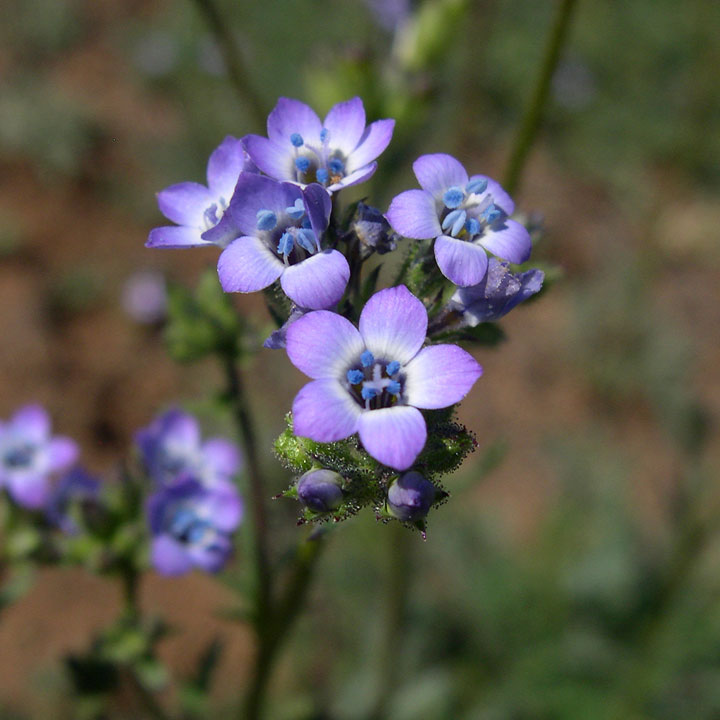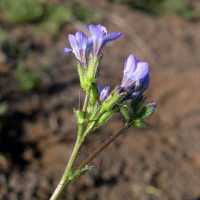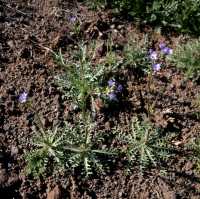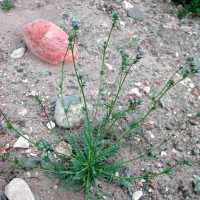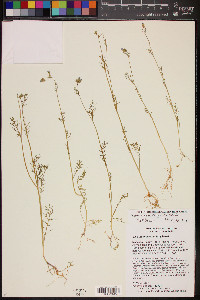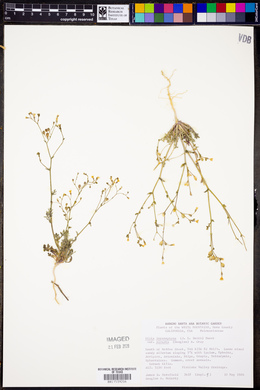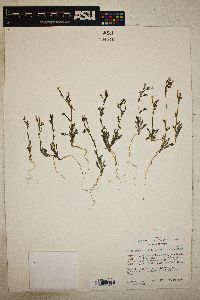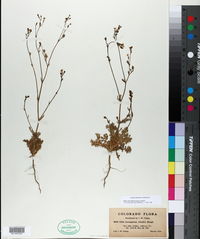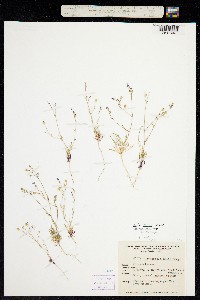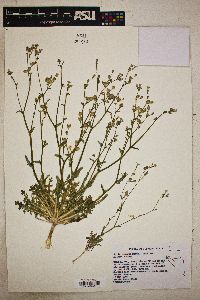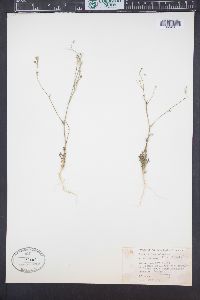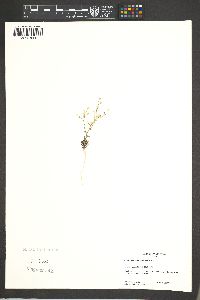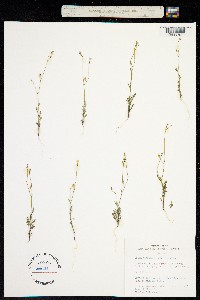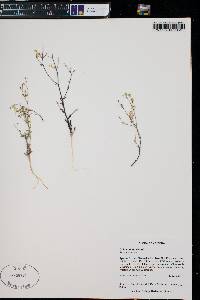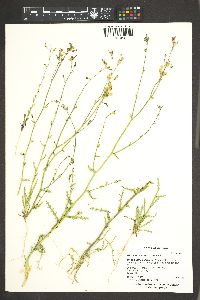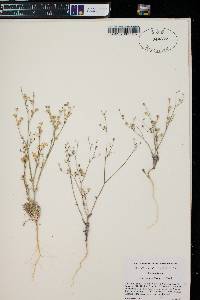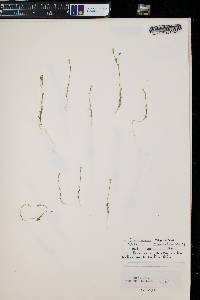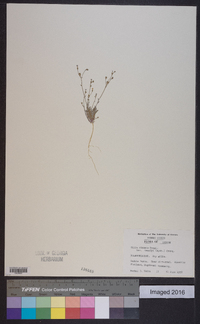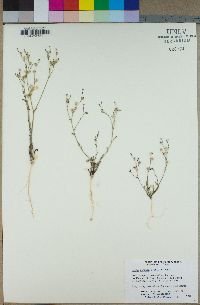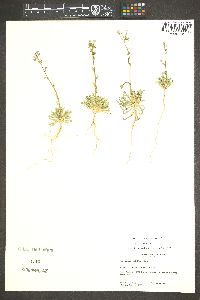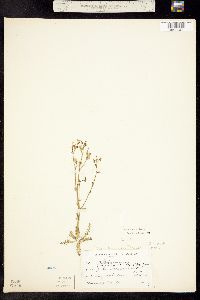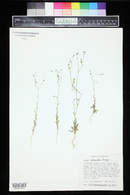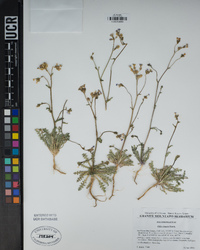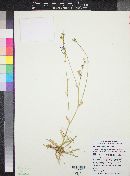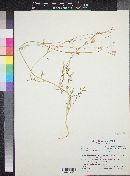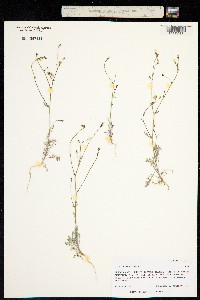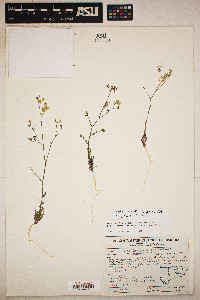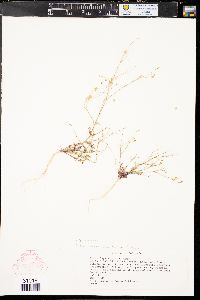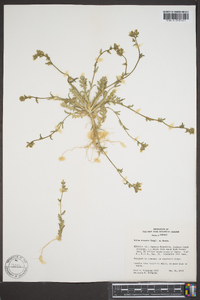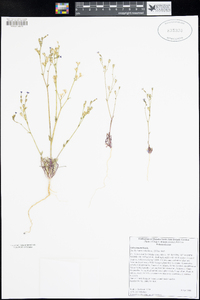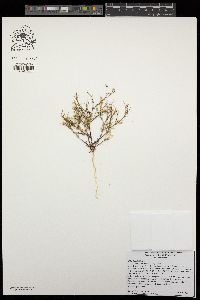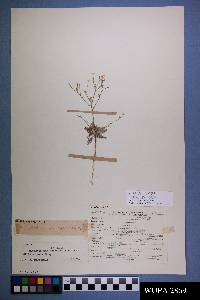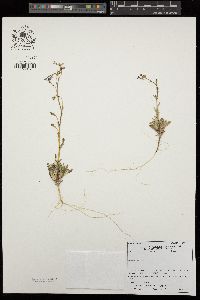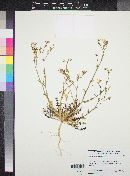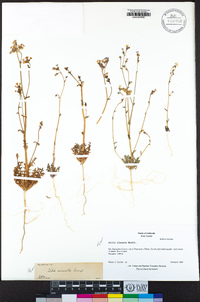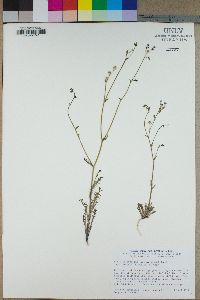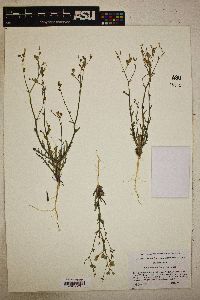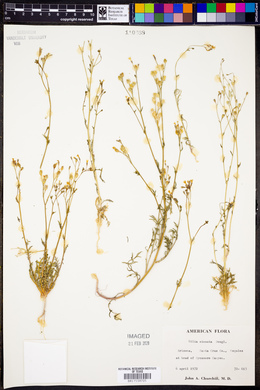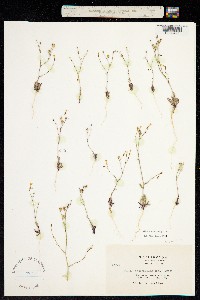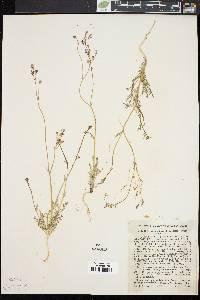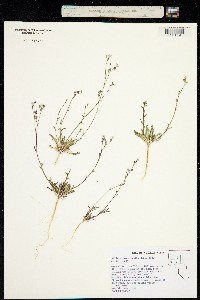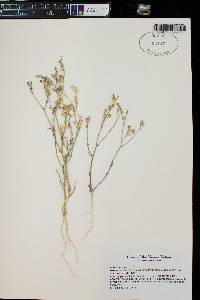
|
|
|
|
Family: Polemoniaceae
rosy gilia, more...Rosy Gily-Flower
[Gilia inconspicua subsp. sinuata, moreGilia inconspicua var. sinuata (Dougl. ex Benth.) A. Gray] |
PLANT: Annual, 9-30(-35) cm tall, simple or branched above rosette, glabrous and glaucous below, glandular above. LEAVES: cobwebby pubescent on upper surface, abruptly reduced above the basal rosette; basal deeply lobed once, the lobes oblong; cauline clasping, dentate to entire. INFLORESCENCE: open, with 1-3 short pedicelled flowers at branch tips. FLOWERS: calyx 3-5 mm long, glandular, thelobes short acuminate; corolla funnelform, 7-12 mm long, the tube exserted, purple and whitestriate, the throat yellow or purple tinged below, the lobes white to lavender; stamens insertedon the throat; anthers exserted; stigmas located among or slightly above the anthers. CAPSULE: 4-7 mm long, ovoid. 2n=36. NOTES: Sandy soils, shrubland, woodland; Apache, Cochise, Coconino, Gila, Graham, Maricopa, Mohave, Pima, Pinal, Yavapai cos.; 300-1900 m (1000-6200 ft); Mar-May; WA to ID, s to CA and AZ. REFERENCES: Dieter H. Wilken and J. Mark Porter, 2005, Vascular Plants of Arizona: Polemoniaceae. CANOTIA 1: 1-37. VPAP (Wilken and Porter 2005), Jepson 2012, Allred and Ivey 2012 Duration: Annual Nativity: Native Lifeform: Forb/Herb General: Annual herbs, 10-35 cm tall; stems unbranched or branched above the basal rosette, glabrous and glaucous (slightly waxy) near the base, the upper stems covered with amber-colored stipitate glands. Leaves: Basal rosette plus a few reduced, alternate stem leaves, all sparsely cobwebby on the upper surfaces; basal leaves deeply divided into oblong lobes; stem leaves dentate or entire, with clasping bases. Flowers: Purple, white, and yellow, arranged in open panicles with 1-3 short-pedicelled flowers at the tip of each branch; calyx 3-5 mm long, consisting of 5 herbaceous sepals connected to each other by papery membranes, the sepals short-acuminate and usually covered with gland-tipped hairs; corolla funnelform, 7-12 mm long, the tube portion of the corolla longer than the sepals and purple-and-white-striate, the corolla throat yellow or purple-tinged below, and the corolla lobes white to lavender; anthers exserted beyond the corolla. Fruits: Capsules 4-7 mm long, ovoid; containing several seeds. Ecology: Found in sandy soils, shrublands, and woodlands from, 1,000-6,000 ft (305-1829 m); flowers March-May. Distribution: B.C., WA, and ID, south to CA, AZ, and NM; south to n MEX. Notes: This delicate annual Gilia is quite similar to G. mexicana and G. flavocinta. Distinguish it based on its stem leaves with bases that clasp the stem; the mostly hairless lower portions of the plant, with sparse cobwebby hairs on leaf tops and at lower leaf axils only (G. flavocinta and G. mexicana are more copiously cobwebby); the rachises (center stalks) of basal leaves which are wide, flat, and strap-like; the copiously glandular upper stems, particularly near the flowers; and the usually glandular sepals. Glands are usually amber-colored and on short stalks. Ethnobotany: The Hualapai parched and ground the seeds into seed butter. Etymology: Gilia is named for Filippo Luigi Gilii (1756-1821) an Italian naturalist, while sinuata means having sinuous or wavy margins. Synonyms: Gilia inconspicua var. sinuata Editor: SBuckley 2010, FSCoburn 2015 , AHazelton 2017 |
This project was made possible in part by the Institute of Museum and Library Services [MG-70-19-0057-19].
Powered by Symbiota

